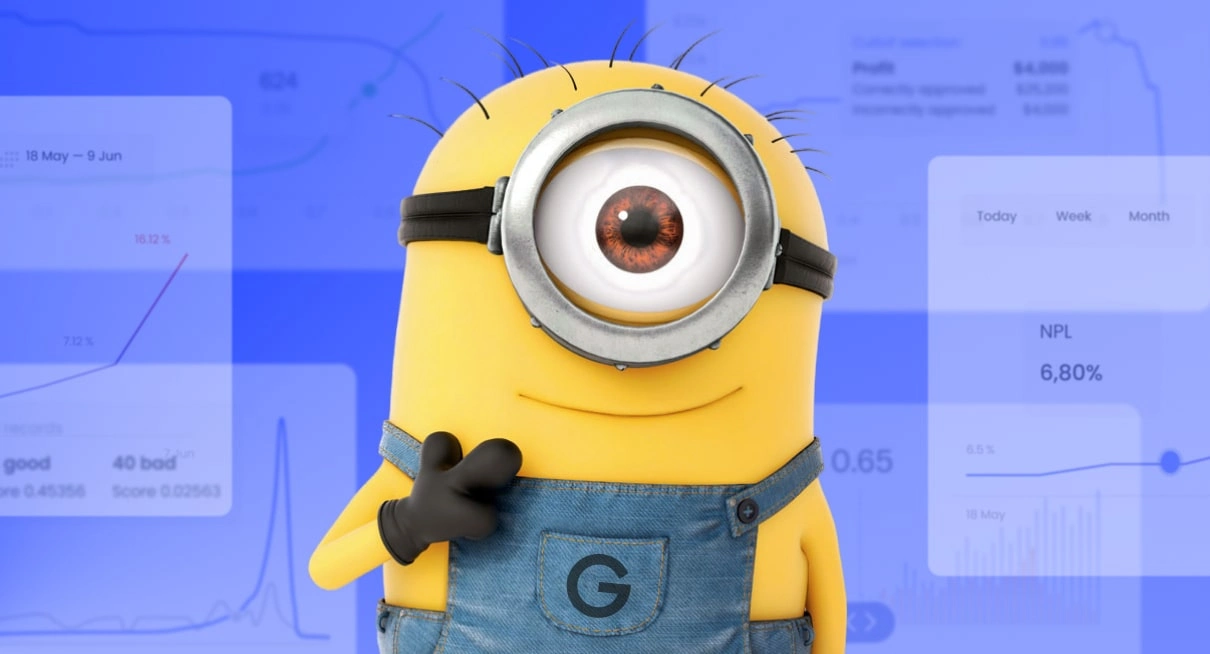Counterparty Risk Vs. Credit Risk Management: What’s The Difference?

Knowing how to manage risk effectively is one essential part of the management puzzle. But for those engaged in risk management, the topic of counterparty risk vs. credit risk often arises. Although these two terms are similar, how they impact the practices of your business’ risk management differs. Let’s unwrap the mystery, define the difference between credit risk and counterparty credit risk, and find out which could work best for your business.
What is counterparty risk?
Counterparty risk is all about the other party (business or individual) in an agreement. The counterparty risk meaning indicates the concern is they may renege or default on their contractual agreements, therefore leading to an untenable situation, such as bankruptcy. Counterparty risk exposure is the level of risk facing the company from any one of the counterparties. This type of risk can happen across many spheres, including finance, insurance, etc.
Counterparty risk examples
Depending on the sphere, counterparty risk can have numerous forms. Let’s take a quick look at some of the counterparty risk examples:
- Investors that invest in building new companies
- Venture capitalists seeking to invest
- P2P lending firms and their clients
- Policyholders and their insurance contracts
- Traders dealing with market movements
- Subprime mortgage risk and other poor lending strategies
Of course, this list is not limited, and counterparty risk can apply to other areas as well.
What is a credit risk?
Credit risk is what it says on the tin—the risk of lending for the lender. Essentially the credit risk meaning is a non-performing loan and refers to a client’s creditworthiness. This term isn’t just confined to B2B but can infer interactions with a client or another business, focusing more on their ability to repay and risk of not repaying a loan.
Credit risk examples
Although typically thought off within the realms of business loans, credit risk is in fact a much wider concept. Credit risk examples can include:
- Mortgage lending and its risks
- Commercial or B2B lending
- Factoring
- Derivatives and other securities
- And more.
What’s the difference between credit risk and counterparty credit risk?
The counterparty risk vs credit risk debate is one you’ve likely heard time and time again. But what really is the difference between these similar but different terms?
Essentially, both counterparty risk and credit risk refer to a party’s inability to fulfill a loan’s conditions. The counterparty risk looks at specific parts of the lending process—pre-settlement and settlement risk. Meanwhile, credit risk is a more expansive concept looking at all types of lending risk, including counterparty risk.
Still confused? When thinking of the differences between these two, generally, credit risk is more often employed in the financial sector, while counterparty risk is more about cooperation.
How to mitigate counterparty risk?
As always with risk management, the key to counterparty risk is to first understand the challenge at hand. Counterparty risk is also known as default risk, so this means that both parties could potentially be at risk of defaulting.
It’s important to know who you’re doing business with. Ensure to the best of your ability that they are a reliable client and intend to do what they state on the contract. Then, based on this information, consider if you need to implement any premiums within the contract depending on that risk. To mitigate the counterparty risk as best as possible, follow these steps:
- Evaluate — dive into available data, especially financial data about your potential partner.
- Peer analysis — check out insights from your industry, and reviews and get feedback from your peers.
- Credit score — evaluate their creditworthiness, utilize the latest technology where possible, such as GiniMachine, and take note of overall financial health.
- Terms and limits – monitor exposure risk and ensure limits are in place where they need to be.
- Monitor exposure — have a system in place that continuously reviews the company to ensure new, more dangerous risks don’t appear.
Credit risk management strategy
Managing credit risk should be a cornerstone of your risk management strategy, it’s that important. If you’re just getting started with this in a meaningful way, the best place to being is with borrowers that you deem to be a higher risk. Here you have the best chance of mitigating risk and ensuring success. Follow these steps to help you:
- Automate decision-making — human bias and error are all too common in finance. Onboarding smart AI tools, such as automated credit risk management software, can help alleviate the stress and ensure a smooth lending process.
- Liquid collateral and security deposits — having something in return if a credit default can be a significant deterrent from that type of situation appearing.
- Warranties and sureties — these can help reduce the rate of risk by providing a security for return
- Non-refund risk insurance — insurance is often standard practice in many large-scale loans. It can help reduce risks of a default happening and mitigate the effects
- Incentives — early pay-outs can save clients a lot of money. That’s why they could prove to be helpful in ensuring payments.
- Collection scoring — this process helps to understand another business’s debt and manage it if need be.
Of course, these are just some of the most effective ways to limit the risks of credit scoring. Got more? Let us know.
How can GiniMachine help?
When faced with risk such as counterparty or credit, companies can become nervous when dealing with them, leading to inaction, which puts the company at even more risk. Of course, this is understandable as there is an overwhelming amount of information out there and just as many solutions claiming to be the best.
So, what does GiniMachine offer? And why is it so effective?
GiniMachine is a no-code AI platform that helps to automate decision-making, analyses credit scores, provides predictive analytics tools, and overall makes running a business just a little smoother.
GiniMachine makes it possible to upload data and build AI models to reduce credit risk and improve business health. It’s no-code platform means it can be used by non-experts to fortify processes within a company while reducing the risk.
Essentially, this all means you can enter inter agreements with confidence and ensure that you get the data you need to make decisions right away.
Counterparty risk vs. credit risk: managing your business’s risks right
A partner or client going into default is a nightmare situation for any lending business. Although, this is not always 100% unavoidable, steps can be taken in advance to reduce credit and counterparty risks, helping to ensure financial health for the lender for longer.



